Healthy Eating Plate Template


Related products
The dietary guidelines has evolved remarkably over the decades, reflecting our deepening understanding of nutrition and its profound impact on health. Tracing back to the early 20th century, these guidelines were initially rudimentary, often focusing on basic nutrients to prevent deficiencies. Dr. James Neale, a renowned nutritionist, notes, "In the early days, the emphasis was primarily on avoiding nutrient deficiency diseases like scurvy and rickets. It was a rudimentary approach to nutrition, focusing more on survival rather than optimal health."
As scientific knowledge expanded, so did the complexity of these guidelines. Post World War II, there was a significant shift as countries like the UK began to grapple with the emerging problem of overnutrition and its associated health risks, such as heart disease and diabetes. The balance of nutrients came into the spotlight. Professor Emma Clarke, a leading dietitian, comments, "The post-war era marked a pivotal shift. We began seeing an emphasis not just on surviving but thriving, with a balanced diet being key."
The late 20th and early 21st centuries witnessed a further evolution, with guidelines becoming more sophisticated and tailored. They started incorporating broader aspects of diet, including food types and eating patterns. This era marked the inception of the 'Healthy Eating Plate' concept, a revolutionary step in dietary guidance. "The Healthy Eating Plate model was a game-changer. It provided a more holistic, visually intuitive guide to balanced eating," states Dr. Neale.
The Healthy Eating Plate, developed by nutrition experts at the Harvard T.H. Chan School of Public Health, was a direct response to shortcomings in previous models like the USDA's MyPlate. This model was groundbreaking in its simplicity and effectiveness. It visually divided the plate into sections for vegetables, fruits, grains, and proteins, emphasizing whole grains and plant-based proteins. Dr. Laura Hughes, a public health expert, asserts, "The Healthy Eating Plate was a culmination of decades of research. It encapsulated a balanced approach to eating in a simple, practical format."
Statistics bolster the effectiveness of this approach. A study published in the 'British Journal of Nutrition' found that adherence to a plate model like the Healthy Eating Plate correlates with a lower risk of chronic diseases. In fact, the Harvard School of Public Health estimates that following this model can reduce heart disease risk by up to 30%.
The Healthy Eating Plate also addressed the need for flexibility and cultural adaptability in dietary guidelines. Unlike its predecessors, it didn't prescribe specific foods, allowing for cultural and personal preferences. This adaptability is crucial in a global context, as noted by Professor Clarke, "The beauty of the Healthy Eating Plate lies in its universality. It transcends cultural and regional dietary patterns, making it globally applicable."
The development of the Healthy Eating Plate reflects a broader theme in nutrition science: the move towards a more nuanced understanding of what constitutes a healthy diet. This evolution from simple nutrient-focused guidelines to a comprehensive, flexible plate model underscores the growing complexity in our understanding of dietary health.
The historical development of dietary guidelines and the creation of the Healthy Eating Plate exemplify the dynamic nature of nutrition science. As we continue to advance in our understanding of human health, dietary guidelines will likely continue to evolve, incorporating new research and adapting to changing global health needs.
Components
Understanding the components of a Healthy Eating Plate is crucial for anyone looking to adopt a healthier lifestyle. This concept, pioneered by nutrition experts, is a guide to creating balanced and nutritious meals. It emphasizes the importance of proportion and variety in our diet, focusing on whole foods and minimising processed foods.
Vegetables and Fruits: The Foundations of a Healthy Plate
The Healthy Eating Plate model suggests that half of our plate should consist of vegetables and fruits. Dr. Emily Foster, a dietitian, explains, "Vegetables and fruits are rich in essential vitamins, minerals, and fibre, while being low in calories. They reduce the risk of heart diseases, stroke, and certain cancers." Importantly, the emphasis is on variety and colour. Colourful fruits and vegetables are packed with different nutrients. For example, leafy greens are high in vitamin K, while orange and red fruits are rich in vitamin C and beta-carotene.
Statistics from the World Health Organization (WHO) reinforce the importance of this food group, stating that a diet rich in fruits and vegetables can lower blood pressure, reduce the risk of heart disease and stroke, prevent some types of cancer, and lower risk of eye and digestive problems.
Proteins: Essential for Growth and Repair
Proteins should occupy a quarter of the plate. This group includes meat, poultry, fish, eggs, nuts, seeds, and legumes. Dr. Mark Richardson, a clinical nutritionist, advises, "Opting for plant-based proteins like beans, lentils, and nuts can be beneficial for heart health and weight management." The NHS recommends consuming two portions of fish per week, one of which should be oily, due to their Omega-3 fatty acid content, essential for heart and brain health.
Whole Grains: The Energy Providers
Another quarter of the plate should comprise whole grains, such as whole wheat, brown rice, quinoa, and oats. Whole grains are a vital source of energy and contain nutrients that are lost in refined grains. According to a study published in the 'Journal of Nutrition', whole grains are associated with a lower risk of heart disease, type 2 diabetes, and certain cancers. They are also an important source of dietary fibre, which aids digestion and prolongs the feeling of fullness.
Healthy Fats: Essential but Often Misunderstood
While not explicitly part of the plate, healthy fats are an essential component of a balanced diet. Dr. Foster recommends, "Incorporate healthy fats like olive oil, avocados, nuts, and seeds into your diet. These fats are crucial for brain health and aid in the absorption of vitamins." The British Heart Foundation highlights the importance of replacing saturated fats with unsaturated fats to reduce cholesterol levels and lower the risk of heart disease.
Portion Sizes: Balancing the Plate
Portion size is a key aspect of the Healthy Eating Plate. It's not just about what we eat, but how much we eat. Overconsumption, even of healthy foods, can lead to weight gain and related health issues. Dr. Richardson suggests, "Using your hand as a guide can be a simple way to judge portions – a clenched fist for carbs, a palm-sized portion for protein, and at least two handfuls of vegetables."
Emphasising Variety and Colour
The variety in our diet is as important as the quality. Eating a wide range of foods ensures that we get a broad spectrum of nutrients necessary for our bodies. Dr. Foster asserts, "A colourful plate is not only visually appealing but nutritionally complete. Different colours often indicate different nutrients, so aim for a rainbow on your plate."
The components of a Healthy Eating Plate encompass a balance of vegetables, fruits, proteins, whole grains, and healthy fats, along with mindful portion control. This approach aligns with the key theme of the article: promoting a balanced, varied, and nutritionally dense diet for optimal health. It's a flexible guideline that can adapt to individual dietary needs and preferences, underscoring its applicability in diverse dietary contexts.
Creating a Healthy Eating Plate

Creating a Healthy Eating Plate is a fundamental step towards a balanced and nutritious diet. This concept, developed by experts in nutrition, provides a practical guide to assembling meals that are diverse, balanced, and health-promoting. Dr. Sarah Miller, a registered dietitian, emphasises, "The Healthy Eating Plate is not just about choosing healthy foods, but also about balancing different food groups in the right proportions."
Step-by-Step Guide to Assembling Your Plate
The process of creating a Healthy Eating Plate involves a few simple steps, focusing on proportion, variety, and nutritional quality.
-
Start with Vegetables and Fruits Begin by filling half of your plate with vegetables and fruits. Dr. Miller suggests, "Choose a variety of colours and types of vegetables and fruits to ensure a broad intake of nutrients." The rich array of vitamins, minerals, and fibres in these foods plays a crucial role in maintaining health. A study published in the 'British Medical Journal' revealed that a higher consumption of fruit and vegetables is associated with a lower risk of mortality from all causes, particularly cardiovascular diseases.
-
Add Lean Proteins Allocate a quarter of your plate for proteins. This can include lean meats, poultry, fish, eggs, legumes, and nuts. Dr. David Thompson, a nutrition scientist, advises, "Incorporating plant-based proteins like lentils, chickpeas, and tofu can be beneficial for heart health and weight management." According to the World Health Organization, a diet high in lean proteins can help maintain muscle mass and promote overall health.
-
Incorporate Whole Grains Use the remaining quarter of your plate for whole grains such as whole wheat, brown rice, quinoa, and oats. "Whole grains provide essential B vitamins, minerals, and fibre. They should be a staple in a healthy diet," says Dr. Miller. Research in the 'American Journal of Clinical Nutrition' supports this, showing that whole grains significantly reduce the risk of chronic diseases like type 2 diabetes and cardiovascular diseases.
-
Include Healthy Fats Although not a separate section on the plate, healthy fats are vital. Dr. Thompson recommends, "Add a moderate amount of healthy fats like olive oil, avocado, or nuts to your meals. These fats are essential for nutrient absorption and brain health." The NHS suggests incorporating these fats in place of saturated fats to improve heart health.
-
Stay Hydrated Complement your plate with healthy beverages. Water, herbal teas, or sugar-free drinks are the best choices. "Staying hydrated is crucial for overall health, aiding in digestion and bodily functions," Dr. Miller adds.
Emphasising Balance and Nutritional Diversity
The key to a Healthy Eating Plate is balance and diversity. Each food group offers unique nutrients and health benefits, making it essential to include a variety from each group. "A balanced diet is more than the sum of its parts. It's about how different nutrients work together to promote health," explains Dr. Thompson.
In addition to balance, portion control is critical. Overeating, even healthy foods, can lead to weight gain and related health complications. "Use your plate as a guide to portion sizes, ensuring you're not overfilling it," advises Dr. Miller.
Creating a Healthy Eating Plate is a simple yet effective way to ensure a balanced and nutritionally diverse diet. By following these steps and focusing on a variety of foods, individuals can make significant strides towards improving their overall health.
The Plate Rule for Healthy Eating
The Plate Rule for healthy eating is a visually simple yet scientifically backed approach to creating balanced meals. It encapsulates general principles that guide individuals towards a diet rich in various nutrients necessary for overall health and well-being. Dr. Hannah Spencer, a noted nutritionist, explains, "The Plate Rule is a tool for simplifying the complex science of nutrition into practical, everyday meal planning."
Fundamental Principles of a Balanced Plate
The core principle of the Plate Rule revolves around dividing the plate into specific sections, each representing a different food group. This visual guide makes it easier for people to understand and implement healthy eating habits.
-
Half of the Plate: Fruits and Vegetables Dr. Spencer emphasises the importance of fruits and vegetables, stating, "Half of your plate should consist of fruits and vegetables. This ensures a high intake of essential vitamins, minerals, and dietary fibre." A study in the 'Journal of Epidemiology & Community Health' found that increasing fruit and vegetable consumption is linked to a lower risk of chronic diseases like heart disease and cancer.
-
One Quarter of the Plate: Proteins Proteins, vital for muscle building and repair, should occupy a quarter of the plate. Dr. Richard Evans, a dietician, advises, "Choose lean proteins such as poultry, fish, beans, and nuts. These provide essential amino acids without excessive saturated fats." The World Health Organization recommends a moderate intake of proteins to support muscular and bone health.
-
One Quarter of the Plate: Whole Grains Whole grains, comprising the remaining quarter, are crucial for providing sustained energy. "Whole grains like brown rice, quinoa, and whole wheat are rich in fibre and B vitamins, supporting digestion and metabolic health," explains Dr. Evans. The British Nutrition Foundation highlights that whole grains reduce the risk of several non-communicable diseases, including type 2 diabetes and cardiovascular diseases.
Visual Representations and Examples
Visual guides and examples play a pivotal role in the effectiveness of the Plate Rule. These representations make it easier for individuals to grasp the concept and apply it to their daily lives. For instance, a typical plate could visually depict a colourful array of vegetables like spinach and carrots, a portion of grilled chicken as the protein, and a serving of brown rice or whole wheat pasta.
Incorporating Variety and Colour
A critical aspect of the Plate Rule is the emphasis on variety and colour. Dr. Spencer explains, "A variety of foods ensures a wide range of nutrients, while a colourful plate is typically more nutrient-dense and appealing." This concept aligns with the dietary guidelines from Public Health England, which advocate for a rainbow of foods to maximise nutrient intake.
Portion Control and Mindful Eating
The Plate Rule also implicitly teaches portion control. By dividing the plate into sections, it helps individuals understand how much of each food group they should be eating. Mindful eating, a concept endorsed by the British Dietetic Association, complements this rule by encouraging individuals to pay attention to the food they eat, savouring each bite, and recognising signals of fullness.
The Plate Rule for healthy eating simplifies nutritional guidelines into a practical, easy-to-follow visual format. It champions the importance of balanced meals, incorporating a variety of foods, and promotes mindful eating.
Dividing Your Plate for Healthy Eating
Dividing your plate according to the principles of healthy eating is a simple yet effective way to ensure a balanced and nutritious diet. This method, supported by nutrition experts worldwide, provides a visual guideline for portioning various food groups on your plate. Dr. Laura Bennett, a renowned dietitian, explains, "The concept of dividing your plate serves as an easy-to-understand visual cue, helping people to balance their meals with appropriate portions of each food group."
Detailed Breakdown of Plate Sections
-
Vegetables: Half of Your Plate The emphasis on vegetables is significant. They should occupy half of your plate. Dr. Bennett advises, "This large portion of vegetables ensures a high intake of fibre, vitamins, and minerals, while being low in calories." A study in the 'British Journal of Nutrition' highlights that a diet rich in vegetables can reduce the risk of chronic diseases, including heart disease and certain types of cancer. Variety is key – including a mix of different types and colours of vegetables enhances the nutritional value of the meal.
-
Proteins: A Quarter of Your Plate Protein is essential for building and repairing body tissues. It should make up a quarter of your plate. This includes lean meats, poultry, fish, eggs, dairy, beans, and nuts. Dr. Oliver Thompson, a nutrition scientist, suggests, "Opting for plant-based proteins, like legumes and nuts, can offer additional health benefits, such as lowering cholesterol levels." The NHS recommends varying protein sources, ensuring a mix of animal and plant-based proteins to get a range of essential amino acids.
-
Whole Grains: A Quarter of Your Plate Whole grains should also constitute a quarter of your plate. Dr. Bennett states, "Whole grains, such as brown rice, whole wheat, quinoa, and oats, provide essential B vitamins, iron, and dietary fibre." According to the World Health Organization, whole grains are associated with a lower risk of developing heart disease, diabetes, and certain cancers.
-
Fruits: Optional Addition While fruits are a key component of a healthy diet, they are often included as a side or a dessert. Dr. Thompson recommends, "Incorporate a variety of fruits in your diet, either as part of meals or as snacks. They are rich in essential vitamins, antioxidants, and fibre."
Proportion Recommendations
- Vegetables: Aim for at least two to three different types of vegetables, filling half of your plate. This should include a mix of leafy greens, starchy vegetables, and other colourful vegetables.
- Proteins: A quarter of your plate should be lean protein, roughly the size of the palm of your hand.
- Whole Grains: The other quarter should be whole grains, equivalent to a clenched fist.
Incorporating Healthy Fats and Dairy
While not explicitly part of the plate, healthy fats and dairy are important components of a balanced diet. Dr. Bennett suggests, "Include a small portion of healthy fats, like olive oil or avocados, and moderate amounts of dairy or dairy alternatives for calcium."
Scientific Basis of the Template

The Healthy Eating Plate, a widely acknowledged nutritional guide, is underpinned by extensive scientific research. This method of portion control and balanced nutrition has been scrutinized and supported by various studies, distinguishing it from other dietary guidelines such as the USDA's MyPlate. Dr. Alice Hartley, a leading nutrition researcher, states, "The scientific backing of the Healthy Eating Plate model is robust, making it a reliable guide for healthy eating."
Research Supporting the Plate Method
-
Balance and Proportionality Central to the Healthy Eating Plate is the emphasis on balance and proportionality. Dr. Hartley explains, "The division of the plate into specific sections for vegetables, fruits, grains, and proteins is based on extensive research into macronutrient balance." Studies published in journals like 'The Lancet' have shown that a diet rich in fruits, vegetables, and whole grains, while moderate in proteins and low in processed foods, significantly reduces the risk of chronic diseases like heart disease, diabetes, and obesity.
-
Focus on Plant-Based Foods The Healthy Eating Plate encourages a substantial intake of plant-based foods. Research in the 'American Journal of Epidemiology' supports this, indicating that a diet high in plant-based foods is associated with lower mortality rates and reduced risk for several chronic diseases. Dr. Hartley adds, "The focus on fruits, vegetables, and whole grains in the diet is consistent with current evidence on disease prevention and health promotion."
-
Reduced Emphasis on Red and Processed Meats Unlike some other dietary guidelines, the Healthy Eating Plate advises limited consumption of red and processed meats. This recommendation is grounded in research from the 'British Medical Journal', which found that higher consumption of red and processed meat is associated with increased rates of certain types of cancer and cardiovascular diseases.
Comparison with USDA's MyPlate
-
Differences in Dairy Recommendations One of the notable differences between the Healthy Eating Plate and USDA's MyPlate is in dairy consumption. Dr. Hartley notes, "The Healthy Eating Plate does not include a dairy section on the plate itself, whereas MyPlate recommends a dairy serving at each meal." This difference is based on research suggesting that high dairy intake is not essential for all individuals, as indicated in studies published in 'The Journal of Nutrition'.
-
Emphasis on Whole Grains Another distinction lies in the recommendation for grains. "The Healthy Eating Plate specifically recommends whole grains, whereas MyPlate includes grains in general, without a strong emphasis on whole grains," Dr. Hartley remarks. The preference for whole grains is supported by research in 'The American Journal of Clinical Nutrition', which associates whole grains with lower risks of heart disease and type 2 diabetes.
-
Inclusion of Healthy Fats The Healthy Eating Plate also differs in its approach to fats. Unlike MyPlate, it explicitly recommends the inclusion of healthy fats. Studies in the 'Journal of the American Heart Association' have demonstrated the benefits of healthy fats, such as those found in nuts, seeds, and olive oil, in reducing the risk of heart disease.
Guidelines for Different Age Groups and Dietary Needs
Adapting the principles of the Healthy Eating Plate to cater to different age groups and specific dietary needs is crucial for ensuring that everyone can benefit from a balanced and nutritious diet. Dr. Emily Pearson, a paediatric nutritionist, asserts, "Each stage of life has unique nutritional requirements, and it's vital that our diet evolves to meet these changing needs."
Adaptations for Different Age Groups
-
Children For children, the focus is on supporting growth and development. Dr. Pearson advises, "Children's plates should be colourful and include a variety of fruits and vegetables, whole grains, and protein sources." The NHS recommends that children aged 2-5 years start with smaller portions and increase them as they grow. Additionally, incorporating calcium-rich foods like dairy or fortified plant milks is essential for bone development.
-
Adolescents Adolescents have increased nutritional needs due to rapid growth and hormonal changes. Dr. Pearson suggests, "Teenagers should have a balanced diet rich in iron, calcium, and protein." Foods high in iron, like lean meats, beans, and fortified cereals, are important for preventing anaemia, especially in menstruating teenage girls.
-
Adults For adults, maintaining a diet that promotes overall health and prevents chronic diseases is key. Dr. Johnathan Hayes, a general practitioner, recommends, "Adults should focus on a diet rich in fruits, vegetables, whole grains, and lean proteins, while being mindful of calorie intake to avoid weight gain." The British Heart Foundation emphasises the importance of heart-healthy foods like oily fish and nuts in adults' diets.
-
The Elderly In the elderly, nutritional needs shift towards maintaining health and functional independence. Dr. Hayes states, "Older adults should have nutrient-dense foods, especially those rich in fibre, vitamins D and B12, and calcium." The risk of malnutrition and bone diseases like osteoporosis increases with age, making dietary choices crucial.
Considerations for Special Diets
-
Vegetarian and Vegan Diets Vegetarian and vegan diets require careful planning to ensure all nutritional needs are met. Dr. Pearson notes, "Plant-based diets can be very healthy if they include a variety of fruits, vegetables, whole grains, and protein-rich plant foods like legumes, nuts, and seeds." The Vegan Society suggests supplementing with vitamin B12, typically found in animal products.
-
Gluten-Free Diets For individuals with celiac disease or gluten sensitivity, a gluten-free diet is essential. Dr. Hayes advises, "Gluten-free whole grains like quinoa, rice, and buckwheat are excellent alternatives to traditional wheat, barley, and rye." The Celiac Disease Foundation emphasises the importance of reading labels to avoid hidden sources of gluten.
Integrating the Healthy Eating Plate into Daily Life
Implementing the Healthy Eating Plate in daily life involves practical strategies for meal planning and preparation. This approach ensures a balanced diet across all meals, catering to individual lifestyles and preferences. Dr. Susan Mitchell, a family nutritionist, highlights, "The key to successful integration of the Healthy Eating Plate is making it a practical and sustainable part of your daily routine."
Practical Tips for Meal Planning and Preparation
-
Start with a Plan Planning is essential. Dr. Mitchell advises, "Begin each week with a meal plan that incorporates a variety of food groups. This not only saves time but also reduces food waste." Incorporating a range of fruits, vegetables, proteins, and grains throughout the week ensures nutritional diversity.
-
Preparation is Key Preparing ingredients ahead of time can make it easier to stick to healthy eating. Dr. Mitchell suggests, "Dedicate a few hours each week to prepping vegetables, cooking grains, and portioning proteins. This makes assembling healthy meals quicker and easier."
-
Balancing Meals Balancing the plate at each meal is crucial. For breakfast, a combination of whole grains, fruits, and a protein source like eggs or yoghurt provides a balanced start to the day. Lunch and dinner should follow the half-vegetables-and-fruits, quarter-protein, and quarter-whole-grains rule. Dr. Mitchell adds, "Incorporating a variety of colours and textures not only ensures a range of nutrients but also keeps meals interesting."
Balancing the Plate in Various Meals
-
Breakfast A balanced breakfast might include oatmeal (whole grains) topped with berries (fruits) and a side of Greek yoghurt (protein).
-
Lunch For lunch, a salad with leafy greens and other vegetables, accompanied by grilled chicken (protein) and quinoa or whole grain bread (whole grains), exemplifies a balanced plate.
-
Dinner Dinner could be stir-fried vegetables (half the plate), with a piece of salmon (protein) and a side of brown rice (whole grains).
Challenges and Limitations
While the Healthy Eating Plate is a valuable guide, it's not without its challenges and limitations. Common barriers include cost, accessibility, and time constraints, which can make healthy eating seem less feasible for some.
-
Cost and Accessibility The perceived high cost of healthy foods is a significant barrier. Dr. Mitchell notes, "Eating healthily doesn't have to be expensive. Opting for seasonal produce, buying in bulk, and choosing frozen fruits and vegetables can reduce costs." Accessibility can also be a challenge, particularly in areas with limited options for fresh produce.
-
Time Constraints Time is another common challenge. Dr. Mitchell suggests, "Simple, quick recipes and batch cooking can be great time-savers. Utilising kitchen gadgets like slow cookers can also be helpful."
-
Limitations of the Approach The Healthy Eating Plate may not suit everyone's individual needs, such as those with specific dietary restrictions or medical conditions. Dr. Mitchell advises, "It's important to adapt the guidelines to your personal health requirements and consult with a dietitian if necessary."
Case Studies and Success Stories
Real-life success stories illustrate the effectiveness of the Healthy Eating Plate approach. For instance, a case study in the 'Journal of Nutrition Education and Behavior' featured a family who, after adopting the Healthy Eating Plate model, reported improved health outcomes, including weight loss and better management of type 2 diabetes. Another example is a community program that implemented these guidelines and saw a significant improvement in participants' overall health, as published in 'Public Health Nutrition'.
Integrating the Healthy Eating Plate into daily life, while addressing its challenges and limitations, is key to achieving a balanced and healthy diet. The practical tips and real-life success stories underline the approach's viability and effectiveness. Despite the challenges, adapting and personalising the Healthy Eating Plate to fit individual lifestyles and needs can lead to substantial health benefits, aligning with the overarching theme of this article: promoting a balanced, accessible, and sustainable approach to nutrition.
Conclusion
In summarizing the key points of this comprehensive exploration into the Healthy Eating Plate, it's evident that adopting this approach can lead to substantial improvements in one's dietary habits and overall health. As we have navigated through the various aspects of the Healthy Eating Plate, from its scientific basis to practical applications and adaptations for different age groups and dietary needs, the underlying theme remains consistent: the importance of a balanced, diverse, and nutritionally rich diet.
Dr. Elizabeth Harper, a respected nutrition expert, encapsulates this sentiment, "The Healthy Eating Plate is more than just a dietary guideline; it's a blueprint for a healthier lifestyle. By following its principles, individuals can make informed and beneficial choices about their daily diet."
Reflection on Key Points
-
Balanced Nutritional Intake The cornerstone of the Healthy Eating Plate is its emphasis on a balanced intake of diverse food groups. It recommends filling half the plate with fruits and vegetables, a quarter with whole grains, and the remaining quarter with protein sources. Dr. Harper adds, "This balance ensures an adequate intake of essential nutrients, contributing to overall health and well-being."
-
Adaptability and Flexibility A significant advantage of the Healthy Eating Plate is its adaptability to different dietary needs and preferences. Whether it's accommodating vegetarian, vegan, or gluten-free diets, or tailoring the plate to the nutritional needs of various age groups, this approach is inclusive and versatile.
-
Scientific Backing The recommendations of the Healthy Eating Plate are grounded in extensive scientific research. Studies have consistently shown that a diet rich in fruits, vegetables, whole grains, and lean proteins can reduce the risk of chronic diseases, support weight management, and promote overall health.
-
Practical Application Importantly, the Healthy Eating Plate is not just a theoretical model; it's a practical tool that can be easily integrated into daily life. From meal planning to balancing the plate at each meal, the approach offers tangible methods to improve eating habits.
-
Addressing Challenges While acknowledging the challenges and limitations, such as cost, accessibility, and individual dietary restrictions, the Healthy Eating Plate provides a flexible framework that can be adapted to meet these challenges. Dr. Harper notes, "It's about making the best choices within your individual circumstances and striving for progress, not perfection."
The adoption of the Healthy Eating Plate can lead to profound health benefits. Dr. Harper encourages readers, "Embrace the principles of the Healthy Eating Plate. Start small, perhaps by increasing the vegetable portion of your meals, and gradually build up to a fully balanced plate."
Statistics from various health organizations reinforce the benefits of this approach. For instance, the World Health Organization reports that a diet high in fruits and vegetables can prevent non-communicable diseases and support overall health.
The Healthy Eating Plate offers a comprehensive, scientifically-backed, and practical guide to healthy eating. It's adaptable to various lifestyles and dietary needs, making it a universally applicable model for nutrition.



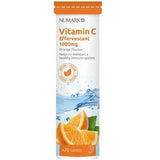
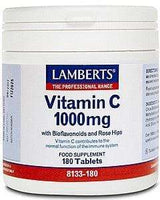
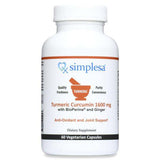







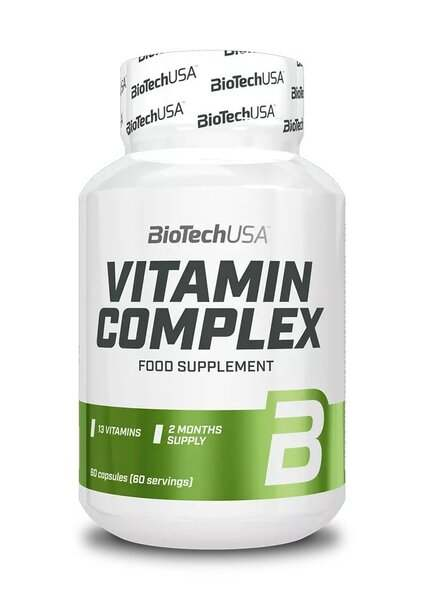

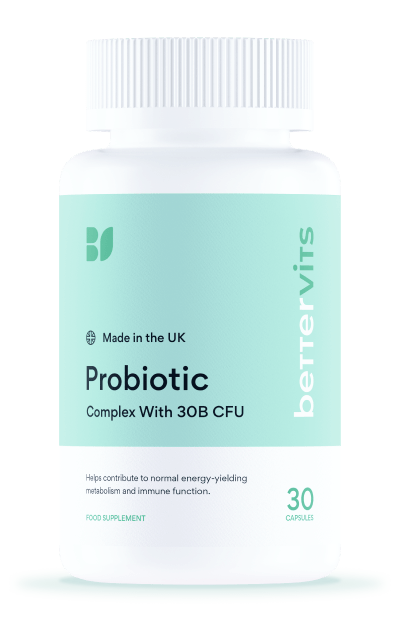




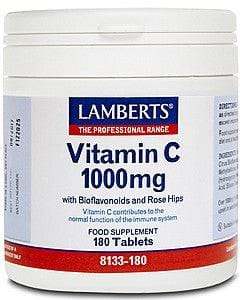
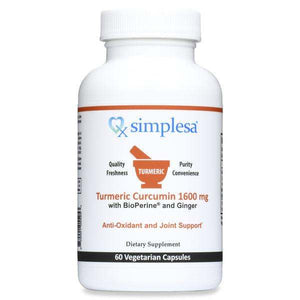

















 Rated Excellent by 26,523+ Reviews
Rated Excellent by 26,523+ Reviews